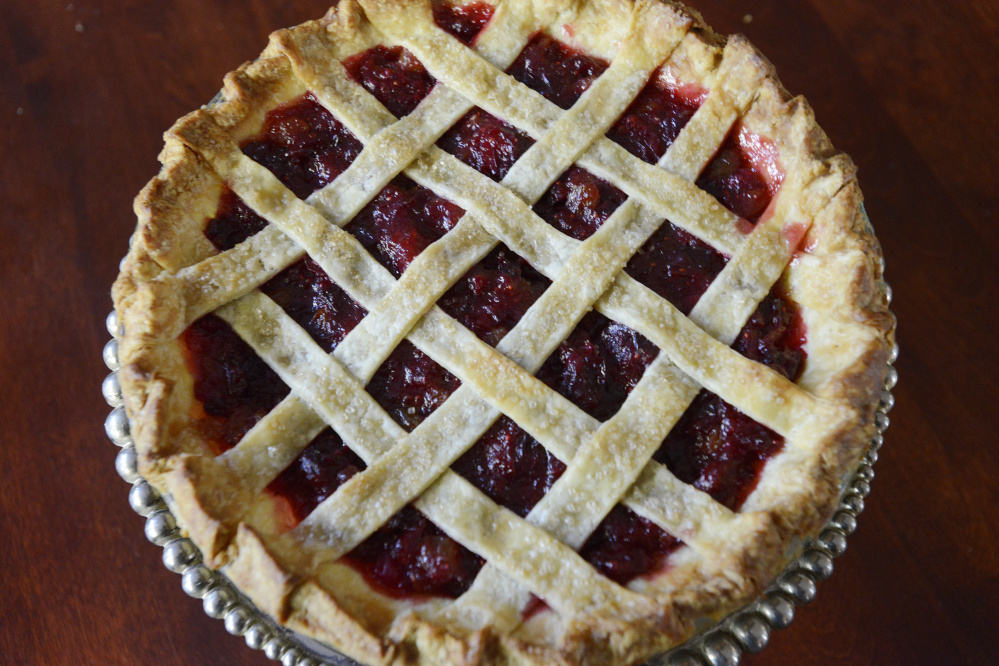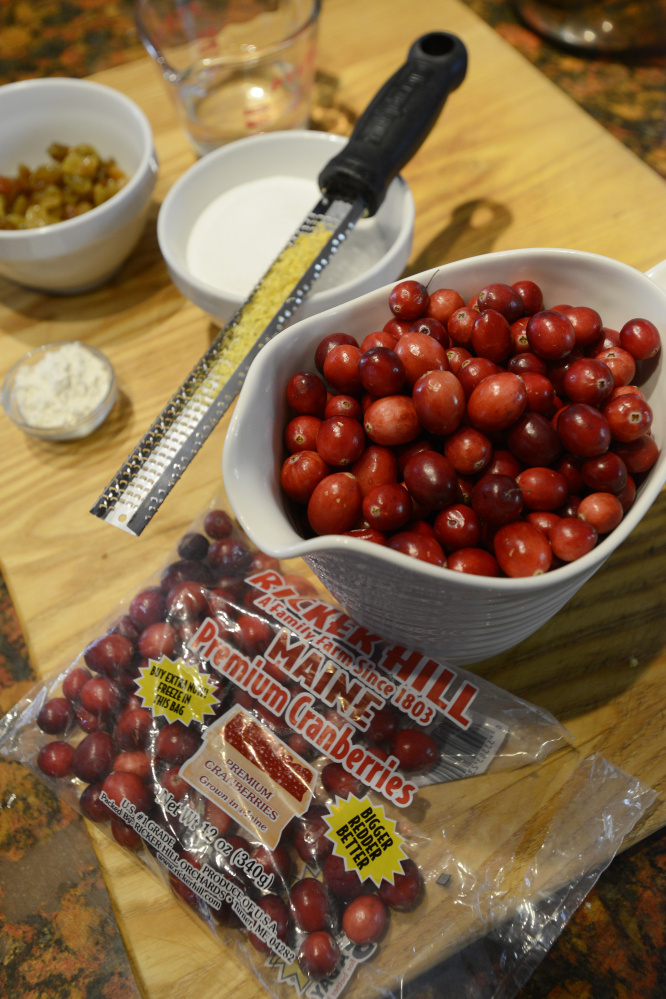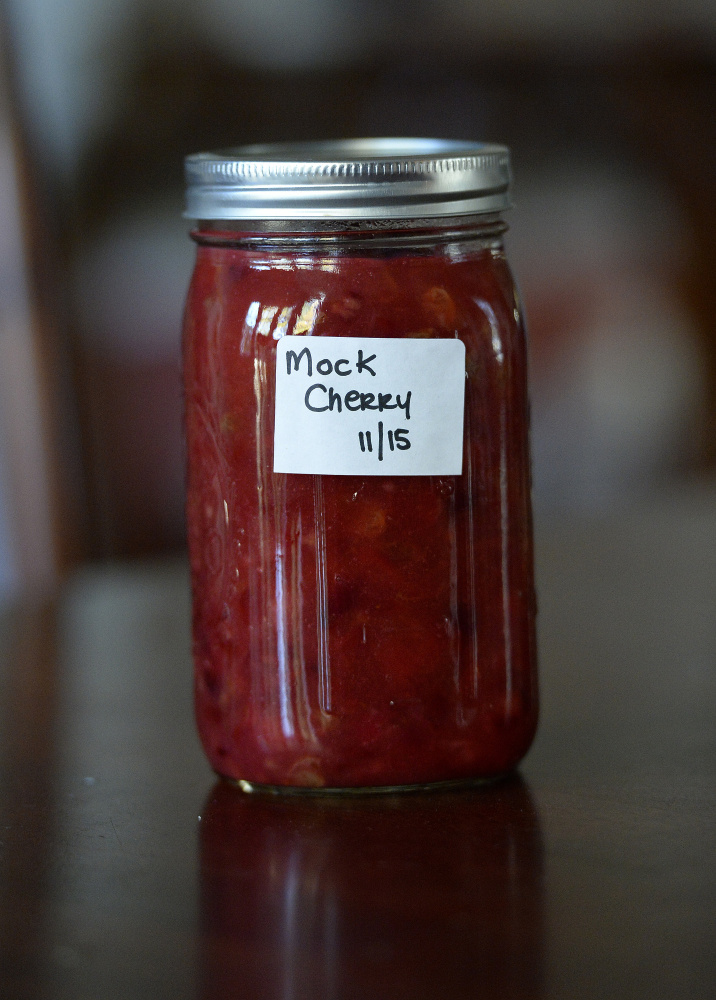I’ve been digging around in the Esta Kramer Collection of American Cookery at the Bowdoin College library. It’s exciting work for a cookbook junkie like me. These 700-plus historically significant cookbooks published between 1772 and 1998 comprise a treasure trove of sustainable and seasonal eating advice.
The early books outline nose-to-tail techniques that serve as the underpinnings of the modern whole-animal butchery and cookery trends espoused by chefs and adventurous home cooks. These volumes take for granted well-stocked root cellars that ensure heartier, locally sourced food would last through the winter. Most tap into Yankee frugality to put food scraps to use in the barnyard and in the kitchen. And recipes in these books tell cooks how to make do with the fruits they’ve got, when they are given, often in cunning combinations.
Take mock cherry pie, for example (see recipe) in which a cranberry and raisin filling bears a shrewd resemblance to cooked sour cherries, whose own season is fleeting in the best of spots, let alone when they can be cajoled to grow in Maine.
Cranberries, native to North America and foraged by Native Americans for food and medicine, were not cultivated in any measurable amount in the Northeast until the 1840s. By the 1850s, though, Maine alone had 1,500 acres of producing bogs, lore has it. The recorded number in 1860 was closer to 600 acres, according to the cranberry timeline posted on the University of Maine’s website.
The current cranberry bog acreage in Maine is smaller still, about 200, 1 percent of Wisconsin’s acreage, the largest cranberry-producing state. After bumper crops in 2012 and 2013 (32,000 and 35,000 barrels, respectively), the 2014 season in Maine was a bust because of an extremely wet July.
But July 2015, with its dry days that kept bees buzzing between blooms, “was a perfect pollination situation,” said Christine Alexander, who operates Sugar Hill Cranberry Company in Columbia Falls with her husband, John. Warmer nights in early fall delayed the harvest, but Alexander still thinks it will be a good year for both her Stevens (a great sauce berry) and Howes (small, uniformly sized berry preferred by bakers) crops.
It’s a good thing, too, as Sugar Hill recently earned its Good Agricultural Processes certification, which should help the Alexanders get their berries placed in Hannaford’s produce section. They also sell the berries on the farm and online.
For cranberry growers this year, it’s a matter of the haves and have nots, said Charlie Armstrong of the University of Maine Cooperative Extension, who tracks cranberry growth, both botanically and actuarially. For growers who brought the berries to fruition, the numbers look very good, Armstrong said. But for those growers who flooded their fields early in the season to prevent flowering because they faced a predicted very low commercial price ($.20/pound), it will not be.
While he could not provide solid total numbers for this year’s Maine cranberry crop (they’re still picking, after all), Armstrong said a second factor contributing to the berry boom is that since many of the vines did not produce last year, they are itching to do so this year.
So the lesson here is, help a farmer out, sister. If you live in Maine and eat cranberries, seek out Maine cranberries for baking, canning and freezing. This year they won’t be hard to find.
MOCK CHERRY PIE FILLING
Many of the community cookbooks from towns in New Hampshire and Maine held as part of the Esta Kramer Collection of American Cookery at Bowdoin College contain recipes for mock cherry pie filling. I lived for 12 years in central Pennsylvania, where I spent the first two weeks of every July frantically canning sour cherries, so I consider myself an expert, and I was suspicious that this combination could even come close to my dad’s favorite pie filling. I was proven wrong, so will make this version – an amalgamation of several recipes – for him this Thanksgiving. To up the local-food ante, substitute dried blueberries for the raisins.
Makes enough filling for 1 pie
4 cups whole Maine cranberries (fresh or frozen)
2/3 cups golden raisins
1¼ cup sugar
1½ tablespoons all-purpose flour
1 teaspoon lemon zest
2 tablespoons cherry liqueur (optional)
Combine the ingredients with ½ cup of water in a medium saucepan and place over medium high heat. Bring to a simmer, reduce heat and cook until the berries pop and the mixture thickens slightly, 6 to 8 minutes. Cool mixture to room temperature. At this juncture, it’s ready to use in pie or can be stored in the refrigerator for up to a week.
CHRISTINE BURNS RUDALEVIGE is a food writer, recipe developer and tester, and cooking teacher in Brunswick. She writes about feeding her family Maine seafood at familyfish.net. Contact her at cburns1227@gmail.com.
Send questions/comments to the editors.





Comments are no longer available on this story